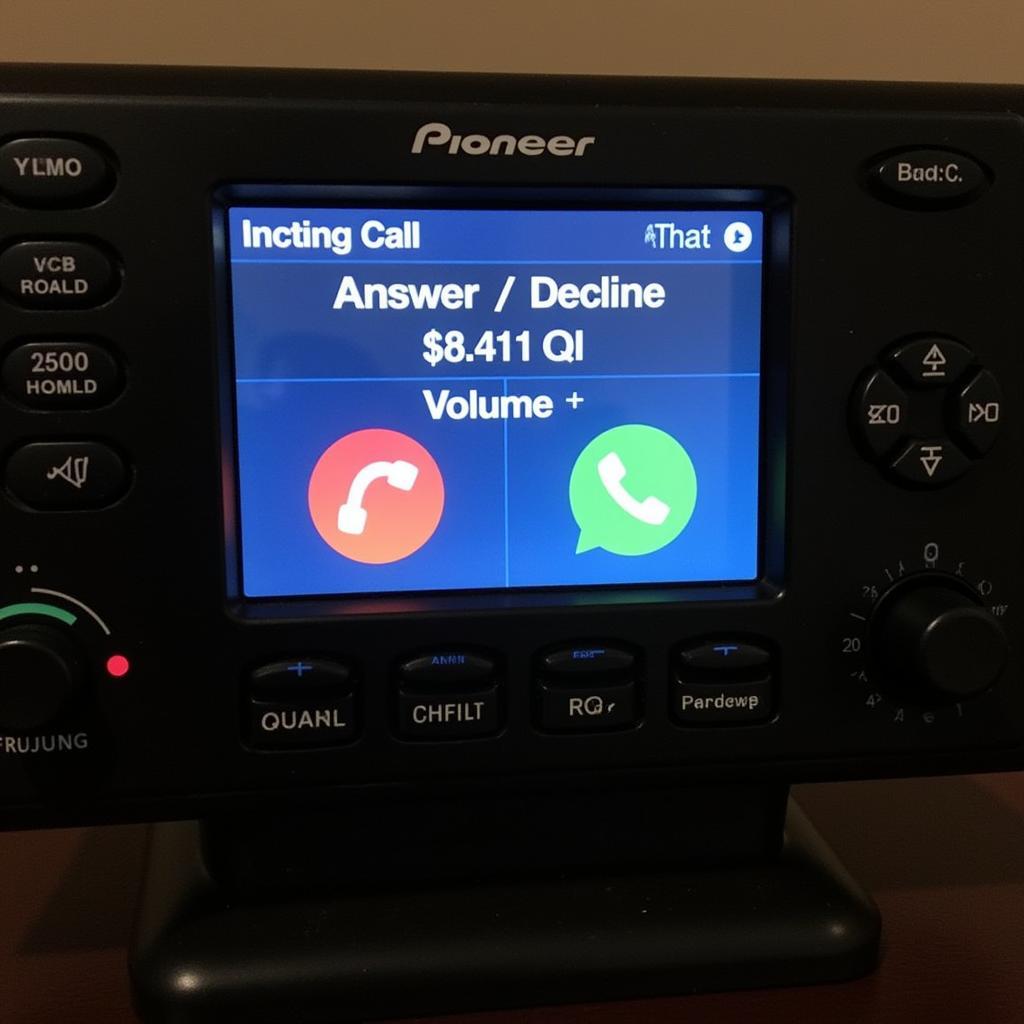The Ford Transit brake fluid warning light is a crucial safety feature that alerts you to a potential problem with your braking system. Ignoring this warning light could lead to brake failure and dangerous driving conditions. This comprehensive guide will explain the common causes of the Ford Transit brake fluid warning light and provide a step-by-step guide on how to reset it.
Understanding the Ford Transit Brake Fluid Warning Light
The brake fluid warning light on your Ford Transit dashboard, often symbolized by an exclamation mark within a circle surrounded by parentheses, illuminates when the brake fluid level in the reservoir drops below a safe level. This drop in fluid can be attributed to several factors, some more serious than others.
Common Causes of a Ford Transit Brake Fluid Warning Light
Before attempting to reset the warning light, it’s crucial to identify the root cause of the problem. Here are some common culprits:
-
Worn Brake Pads: As brake pads wear down, the brake calipers need to extend further to engage the rotors. This extension draws more brake fluid from the reservoir, potentially triggering the warning light.
-
Brake Fluid Leak: A leak in the brake lines, hoses, or calipers can cause a significant loss of brake fluid, leading to the warning light illuminating.
-
Faulty Brake Fluid Level Sensor: The sensor itself might malfunction, incorrectly indicating a low fluid level even when sufficient fluid is present.
-
Air in the Brake Lines: Air trapped within the brake lines can compress, reducing braking efficiency and potentially triggering the warning light.
How to Reset the Ford Transit Brake Fluid Warning Light
Resetting the warning light without addressing the underlying issue is strongly discouraged. If you’re confident that the warning light is on due to a minor issue like worn brake pads or a sensor glitch, you can attempt to reset it. However, if you suspect a brake fluid leak or other serious problems, it’s vital to consult a qualified mechanic immediately.
Here’s a general guide on how to reset the Ford Transit brake fluid warning light:
-
Check the Brake Fluid Level: Open the hood and locate the brake fluid reservoir. It’s usually a translucent plastic container with a black cap, positioned on the driver’s side of the engine bay. Check the fluid level against the minimum and maximum markings on the reservoir.
-
Add Brake Fluid (If Necessary): If the fluid level is below the minimum mark, carefully add the correct type of brake fluid specified in your Ford Transit owner’s manual. Avoid overfilling.
-
Inspect for Leaks: Visually inspect the brake lines, hoses, and calipers for any signs of leaks, such as wetness or fluid drips.
-
Reset the Warning Light: Some Ford Transit models might require a diagnostic tool to reset the warning light. However, in many cases, the light might reset automatically after addressing the underlying issue and cycling the ignition a few times.
-
Test the Brakes: After attempting to reset the light, find a safe location and test the brakes thoroughly at low speeds. Ensure the brake pedal feels firm and responsive. If the light remains illuminated or the brakes feel spongy, seek professional assistance.
When to Seek Professional Help
While resetting the Ford Transit brake fluid warning light might seem straightforward, it’s crucial to remember that the braking system is critical for your safety. If you’re unsure about any aspect of the process or if the warning light persists, don’t hesitate to consult a qualified mechanic.
Here are some situations where seeking professional help is essential:
- You suspect a brake fluid leak.
- The brake pedal feels spongy or unresponsive.
- You hear unusual noises when applying the brakes.
- The warning light remains on after adding fluid and resetting.
Tips for Maintaining Your Ford Transit Brake System
Regular maintenance can help prevent many brake-related problems, including issues that trigger the brake fluid warning light. Here are some preventative measures:
-
Regular Brake Inspections: Have your brakes inspected by a qualified mechanic at least once a year or as recommended in your Ford Transit owner’s manual.
-
Timely Brake Pad Replacement: Replace your brake pads before they wear down completely. This can help prevent damage to the rotors and calipers, as well as prevent the brake fluid level from dropping too low.
-
Brake Fluid Flush: It’s recommended to flush and replace your Ford Transit’s brake fluid every two years or as specified in your owner’s manual. This helps maintain optimal braking performance and prevents corrosion within the brake system.
Conclusion
Addressing the Ford Transit brake fluid warning light promptly is crucial for ensuring safe driving conditions. While minor issues like worn brake pads might allow for a DIY reset, more serious problems require the expertise of a qualified mechanic. By understanding the common causes of this warning light and following the steps outlined in this guide, you can help ensure the integrity and reliability of your Ford Transit’s braking system.
Remember, when it comes to brakes, safety should always be the top priority. If you have any doubts about your Ford Transit’s braking system, don’t hesitate to seek professional assistance.

